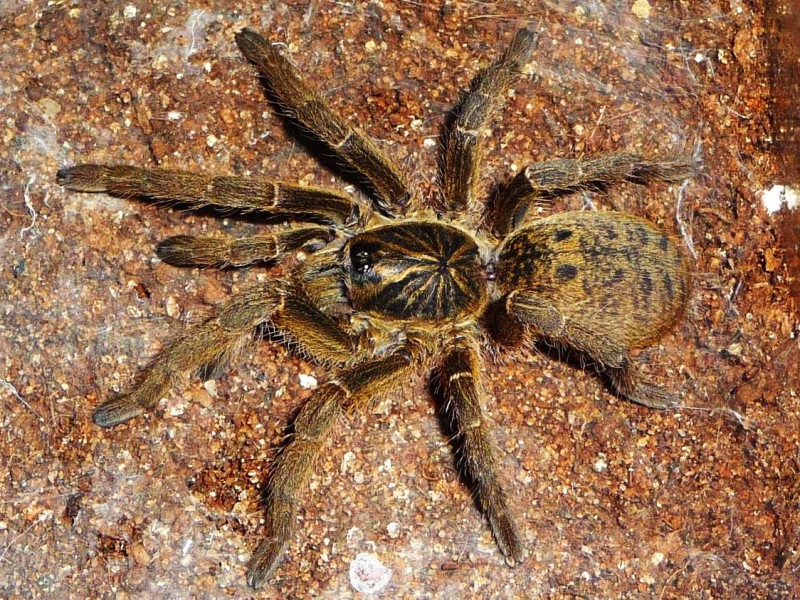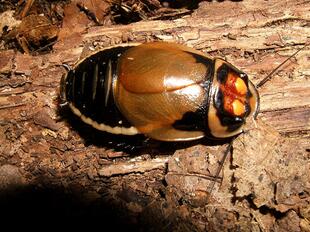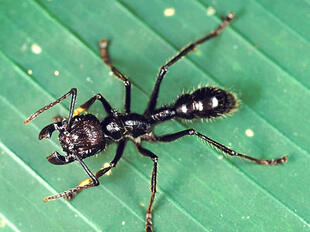
Harpactira guttata(Harpactira guttata)
Phylum —arthropoda
Class —arachnida
Order —araneae
Family —theraphosidae
Genus –harpactira
Appearance
The body size of the female is up to 6 cm and 14-15 cm in leg span, the males are 10-12 cm in leg span.
The main color can vary depending on the age from greenish-gray to beige. The legs are covered with numerous long and bright hairs. The abdomen has large dark dots, the size of which gradually decreases on the back of the body. The carapace has a basic black color with bright divergent rays, 4 on each side.
Habitat
It lives in South Africa.
Behavior
In nature, these spiders live in hilly areas bordering the rainforest, where aloe and various juicy coastal shrubs are found.
Spiders make their homes in burrows or under rocks.
Diet
Harpactiraguttataeats insects.
Reproduction
It makes a fixed-type cocoon. The cocoon contains from 20 to 70 eggs. Incubation is 6 weeks. Spiders are born quite large, the body size of a newborn spider is about 1 cm.
In captivity
Lifespan is about 15 years.
It is recommended for professionals. Active, fast and nervous. The bite is toxic.Because of their defensive nature, they aren't the best species to handle. If approached they will usually go into a threat posture.
An adult Harpactiraguttata tarantula should be provided with an enclosure 2 to 5 gallons in volume with a secure lid.
You should cover the bottom of the enclosure with 5-6 inches of substrate such as shredded coconut husk, but some keepers choose to use peat moss, potting soil or vermiculite.
Provide a heat source and use means to moderate the humidity such as a large open water bowl or misting bottle.
Tarantula diet is typically insects such as crickets, grass-hoppers, beetles, moths, meal worms and cockroaches. A staple diet of crickets is the only food a tarantula requires besides water which can be provided in a shallow dish (lid of a jar or bottle cap). Typically feed an adult twice a week. Uneaten prey should be removed after one day to prevent problems and attracting mites. The food provided should be no larger than the abdomen of the tarantula.
 Russian
Russian
 English
English
























